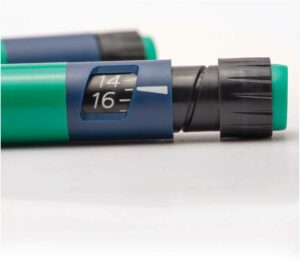Living with diabetes requires a multifaceted approach to managing blood glucose levels, and insulin glargine injections play a pivotal role in this journey. As one of the most widely prescribed long-acting insulin formulations, understanding the nuances of insulin glargine administration is crucial for individuals seeking effective diabetes management. This guide aims to provide a comprehensive overview of insulin glargine injection, covering everything from the basics of administration to advanced tips for optimizing its effectiveness.
Contents
What Is The Insulin Glargine Injection Used For?
 Insulin glargine is a type of long-acting insulin that is used to help control blood sugar levels in individuals with diabetes. It is specifically designed to provide a steady release of insulin over an extended period, typically lasting for about 24 hours. This prolonged action makes insulin glargine suitable for use as a basal insulin. And, helping to maintain a baseline level of insulin in the body between meals and overnight.
Insulin glargine is a type of long-acting insulin that is used to help control blood sugar levels in individuals with diabetes. It is specifically designed to provide a steady release of insulin over an extended period, typically lasting for about 24 hours. This prolonged action makes insulin glargine suitable for use as a basal insulin. And, helping to maintain a baseline level of insulin in the body between meals and overnight.
People with diabetes may use insulin glargine to manage both type 1 and type 2 diabetes. Type 1 diabetes occurs when the body does not produce insulin. Type 2 diabetes involves insulin resistance, where the body’s cells do not respond effectively to insulin. In both cases, insulin glargine helps regulate blood sugar levels by providing a consistent and extended release of insulin, reducing the need for frequent injections throughout the day.
It’s important to note that insulin glargine is typically prescribed as part of a comprehensive diabetes management plan. This may also include other types of insulin (such as rapid-acting insulin for mealtime coverage) and/or oral medications. The specific insulin regimen is determined based on individual factors, including the type of diabetes, lifestyle, and healthcare provider recommendations.
When Is The Best Time To Inject Insulin Glargine?
The timing of insulin glargine injections can vary based on individual preferences, lifestyle, and healthcare provider recommendations. Insulin glargine is a long-acting basal insulin designed to provide a steady release of insulin over an extended period, typically around 24 hours. Therefore, it is generally administered once a day.
Here are some common recommendations for the timing of insulin glargine injections:
- Bedtime Injection (Evening): Many healthcare providers suggest taking insulin glargine at bedtime. This timing aligns with the natural physiological need for increased insulin during the overnight fasting period. By injecting insulin glargine at night, it helps maintain a consistent basal insulin level throughout the night and into the next day.
- Morning Injection: Some individuals may prefer to take insulin glargine in the morning. While less common, this timing can still provide effective basal insulin coverage throughout the day. It is important to maintain a consistent schedule when choosing a morning injection time.
- Split Dosing: In certain situations, healthcare providers may recommend split dosing, where insulin glargine is administered twice a day. This approach can be beneficial for individuals who require more flexibility in their daily routine or for those who experience an uneven distribution of insulin requirements throughout the day.
It’s crucial to consult with a healthcare professional to determine the best timing for insulin glargine based on individual factors. Such as lifestyle, daily routine, and specific needs. Additionally, regular communication with a healthcare team helps to monitor blood glucose levels and make any necessary adjustments to the insulin regimen.
How Many Times A Day Is Insulin Glargine?
Insulin glargine is a long-acting basal insulin designed to provide a steady release of insulin over an extended period, typically around 24 hours. As such, it is typically administered once a day. The once-daily injection of insulin glargine helps maintain a baseline level of insulin in the body, covering the basal insulin needs between meals and overnight.
While the standard regimen is once daily, there are situations where healthcare providers may recommend split dosing, meaning insulin glargine is administered twice a day. This approach can be considered for individuals who may benefit from a more even distribution of basal insulin coverage throughout the day.
Ultimately, the frequency of insulin glargine injections depends on individual factors and healthcare provider recommendations. Individuals with diabetes need to work closely with their healthcare team. They will help to determine the most appropriate insulin regimen for their specific needs. And to make any necessary adjustments based on blood glucose monitoring and other factors.
How To Get Prepared For Insulin Glargine Injection?
 Getting prepared for an insulin glargine injection involves a series of steps to ensure proper administration and minimize any discomfort. Here’s a guide on how to get ready for an insulin glargine injection:
Getting prepared for an insulin glargine injection involves a series of steps to ensure proper administration and minimize any discomfort. Here’s a guide on how to get ready for an insulin glargine injection:
Gather Supplies
Before beginning the injection process, ensure you have all the necessary supplies at hand. These include the insulin vial or pen containing glargine, a sterile needle or pen needle, alcohol swabs or cotton balls, rubbing alcohol for cleaning, and a sharps disposal container for proper needle disposal.
Wash Your Hands
Start by washing your hands thoroughly with soap and water. This basic hygiene step is crucial to reduce the risk of infection during the injection process.
Check Insulin
Examine the insulin vial or pen for clarity. Ensure there are no particles or any signs of contamination. If you notice anything unusual, do not use the insulin and consult your healthcare provider.
Prepare the Injection Site
Choose an injection site, typically in the abdomen, thigh, or upper arm. Clean the selected area with an alcohol swab or cotton ball and rubbing alcohol. Allow it to dry before proceeding with the injection.
Prepare the Syringe or Insulin Pen
If using a syringe and vial, draw the required amount of insulin into the syringe, ensuring there are no air bubbles. If using an insulin pen, set the appropriate dose as prescribed by your healthcare provider.
Administer the Injection
Pinch a fold of skin at the chosen injection site to create a subcutaneous area for the injection. Insert the needle at a 45- to 90-degree angle, depending on the length of the needle and the amount of subcutaneous fat. Inject the insulin slowly and steadily, holding the needle in place for a few seconds before withdrawing.
Dispose of Needles Safely
Immediately dispose of used needles in a sharps disposal container. This ensures the safe and proper disposal of needles, preventing accidental needle sticks.
Store Insulin Properly
Follow the recommended storage instructions for insulin glargine. Typically, insulin should be stored in the refrigerator, but certain formulations may be stored at room temperature. Proper storage ensures the continued efficacy of the insulin.
Keep a Schedule
Establish and adhere to a consistent schedule for insulin glargine injections. Consistency in timing helps maintain a steady level of insulin in your body, contributing to stable blood sugar control.
Monitor Blood Sugar Levels
Regularly monitor your blood sugar levels as directed by your healthcare provider. This helps assess the effectiveness of your insulin regimen and allows for any necessary adjustments to be made.
Always consult with your healthcare provider for personalized advice and guidance on insulin administration. Following these steps and maintaining open communication with your healthcare team is essential for successful insulin therapy and effective diabetes management.
What Are Some Issues To Be Aware Of?
 When using insulin glargine injection or any insulin therapy, there are several issues and potential complications to be aware of. It’s crucial to monitor for these and seek guidance from your healthcare provider. Here are some issues to be mindful of:
When using insulin glargine injection or any insulin therapy, there are several issues and potential complications to be aware of. It’s crucial to monitor for these and seek guidance from your healthcare provider. Here are some issues to be mindful of:
- Hypoglycemia (Low Blood Sugar): Insulin glargine, like all insulins, can lead to hypoglycemia if the dose is too high or if there’s an imbalance between insulin and carbohydrate intake. Symptoms may include sweating, shakiness, confusion, and dizziness. Always be prepared with a source of quick-acting carbohydrates, such as glucose tablets or juice.
- Hyperglycemia (High Blood Sugar): Inadequate insulin doses or improper administration can lead to high blood sugar levels. Regular monitoring and adjustment of insulin doses, as recommended by your healthcare provider, are crucial to prevent hyperglycemia.
- Injection Site Reactions: Some individuals may experience redness, swelling, or irritation at the injection site. Rotating injection sites and proper technique can help minimize these reactions.
- Allergic Reactions: While rare, allergic reactions to insulin can occur. Symptoms may include rash, itching, or difficulty breathing. Seek immediate medical attention if you suspect an allergic reaction.
- Injection Technique: Incorrect injection technique can affect the absorption of insulin. Ensure you are properly trained by your healthcare provider on how to administer injections. Rotating injection sites can also prevent lipohypertrophy (a thickened or fatty area under the skin).
- Lipodystrophy: Long-term use of the same injection site can lead to changes in the fat tissue, causing either lipohypertrophy (enlargement) or lipoatrophy (depression). Regularly changing injection sites helps minimize these issues.
- Weight Gain: Some individuals may experience weight gain while using insulin. This can be attributed to better glucose control and an increased appetite. A balanced diet and regular exercise can help manage weight.
- Drug Interactions: Certain medications, including some oral diabetes medications and other drugs, may interact with insulin. Always inform your healthcare provider of all medications, including over-the-counter and herbal supplements, that you are taking.
- Pregnancy and Breastfeeding: If you are pregnant, planning to become pregnant, or breastfeeding, discuss your insulin regimen with your healthcare provider. Adjustments may be necessary to ensure the well-being of both you and your baby.
Remember to maintain open communication with your healthcare team and seek medical advice if you experience any unexpected symptoms or issues. Proper management and awareness of these potential concerns contribute to successful insulin therapy and overall diabetes control.
Conclusion
In conclusion, mastering insulin glargine injections is a crucial aspect of effective diabetes management. By following proper procedures, such as handwashing, gathering supplies, and choosing appropriate injection sites, individuals can ensure a safe and comfortable experience. Hence, regular monitoring of blood sugar levels, being aware of potential issues like hypoglycemia or injection site reactions, and maintaining a consistent injection schedule are key components of successful insulin therapy.
With dedication to proper insulin administration and ongoing collaboration with healthcare teams, individuals can take charge of their diabetes journey. Thus, work towards achieving optimal blood glucose control for a fulfilling and healthy life.
Do you want to get rid of diabetes? Join our online diabetes treatment program and reverse Diabetes naturally through lifestyle changes such as a Personalized Diet plan, Exercise, Yoga, dieticians, and health coaches.

